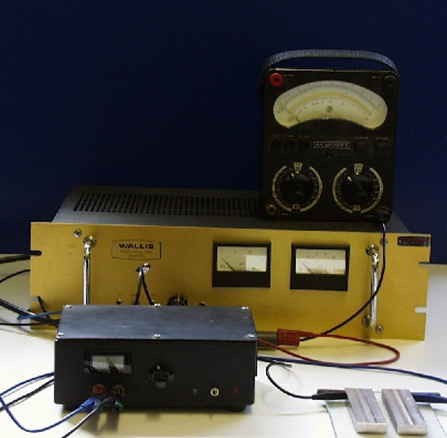To determine the likelihood of electric discharges in installations, it is necessary to know the resistivity of the dust used in the installation. The applied test equipment and procedure are in concordance with IEC 61241-2.2.
Electrical resistivity
The significance of electrical resistivity of powders and dusts in the context of process safety is dual. First, the possibility of accumulating hazardous electrostatic charges and voltages in an industrial process increases with increasing electrical resistivity of the dust. Secondly, the chances that dusts which penetrate into electric and electronic equipment give rise to short circuits and equipment failure, increases as the dust resistivity decreases. From the point of view of the dust explosion hazard, both of these situations may lead to generation of ignition sources.
The test cell consists of two metal electrodes resting on a non-conducting base plate. The dust sample fills the gap (length 100 mm, height 10 mm, width 10 mm) between the electrodes. The resistance of the dust sample is measured for a number of different voltages applied across the gap. The resistivity of the dust is calculated from this measured resistance.
A powder is considered to be conductive, and therefore capable of shorting electrical or electronic equipment when present in this equipment, if the resistivity is less than 10³ Ωm.
Powders can give rise to electrostatic discharges if the resistivity exceeds 1010 Ωm.
- IEC 61241-2.2: Electrical apparatus for use in the presence of combustible dust, section 2: Method for determining the electrical resistivity of dust in layers.
- EN ISO/IEC 80079-20-2:2016: Explosive atmospheres Part 20-2: Material characteristics – Combustible dusts test methods, Section 8.4
- Entwurf DIN VDE 0170/0171 Teil 1502: Elektrische Betriebsmittel zur Verwendung in Bereichen mit brennbarem Staub – Teil 2: Untersuchungs-methoden – Hauptabschnitt 2: Methode zur Bestimmung des elektrischen Widerstandes von Staubschüttungen
- R.K. Eckhoff, Dust explosions in the process industries (1997)

